

Today, there are rapid advancements in manufacturing processes, and precise measurement has become more crucial than ever to ensure that the products meet the exact and expected specifications. Dimensional inspection ensures that each part meets the precise measurements and tolerances that are defined in the design phase. It plays a vital role in maintaining quality and giving the product a competitive edge in the market.
The process of dimensional inspection isn’t just for best practices but is essential for delivering reliable and high-quality parts that meet the exacting standards. In this article, we discuss the dimensional inspection process and its various tools in detail.
Dimensional inspection is a pivotal quality control process in the manufacturing industry. It verifies and measures the various dimensional characteristics of a part to ensure that it conforms to the specified tolerances outlined during the design phase. These dimensional measurements range from diameter, length, width, and height to other geometric attributes. Dimensional inspection involves comparing measurements against specified tolerances to identify any deviations from the outlined requirements.
Dimensional inspection ensures consistency and adherence to design specifications. This inspection process makes use of various tools and techniques and can be performed either manually or through machinery, software, and automated systems.
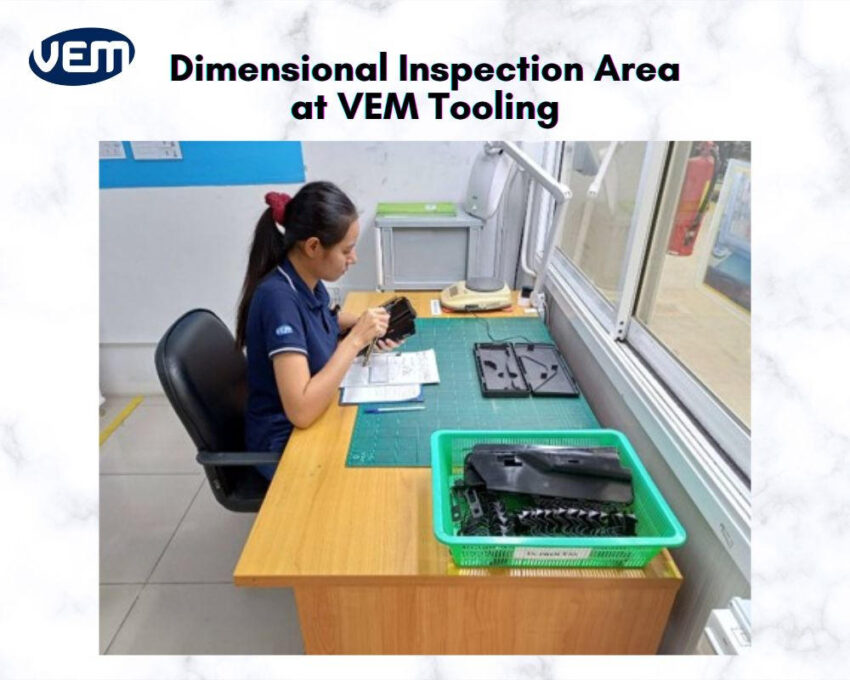
A dimensional inspection report is an extremely detailed document. It enlists the various measurement parameters of the part, such as length, width, height, radii, diameter, etc.
The main goal of a dimensional inspection report in manufacturing is to verify whether the manufactured part meets the dimensional specifications outlined in the design phase. During the inspection process, various measuring equipment, such as coordinate measuring machines (CMMs), laser scanners, and optical comparators, are employed to achieve precise measurements.
There are various advantages to employing dimensional inspection for your parts. Let’s understand some of the primary reasons:
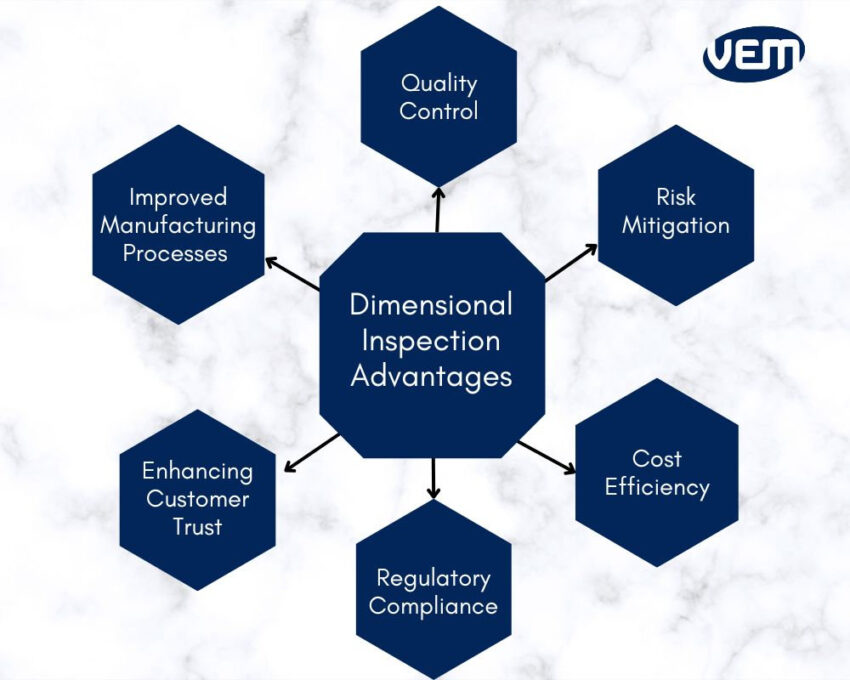
Dimensional inspection enables manufacturers to identify defects early on in the manufacturing processes. It thus helps manufacturers to mitigate potential defects. Its ability to detect any type of deviation leads manufacturers to correct them promptly, which further leads them towards a more stable manufacturing process.
It is imperative that every part meets the required design specifications and expected tolerances to meet the performance and safety requirements of the parts.
Dimensional inspection enables manufacturers to maintain consistency across production batches as it verifies that every part meets the specified dimensions. This particular consistency is required to ensure that parts fit and function aptly when assembled into larger systems.
You should note that most industries have established standards, and parts must comply with the specific standards and regulations of the industries.
Dimensional inspection assists manufacturers in confirming compliance consistently, thus avoiding potential legal issues. It also provides the manufacturers with the required data for certification that is required by the regulatory agencies.
Dimensional inspection ensures that the parts meet the required design specifications, which is why it mitigates the risk by reducing the risk of product failures. This is crucial for parts, in which safety is a priority.
Since dimensional inspection enables manufacturers to produce high-quality parts consistently, it enhances customer trust and, ultimately, the image and reputation of the brand.
Dimensional inspection ensures accurate measurements. These measurements reduce rework and material wastage, thereby enabling manufacturers to save time and resources.
Dimensional inspection includes various tools and processes that can be either manual or advanced automated systems. Let’s understand some of the most common dimensional inspection tools:
Calipers are handheld tools that are employed to measure the distance between the two opposite sides of an object. They are easy to use and can quickly provide measurements with moderate accuracy.
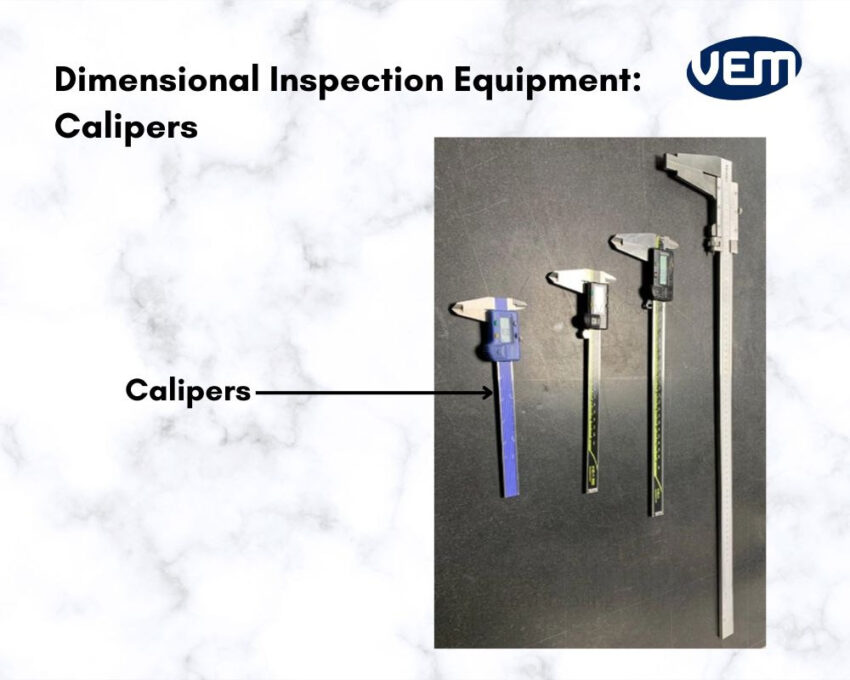
Micrometers demonstrate greater precision than calipers, which is why they are apt for measuring small dimensions with high accuracy.
Micrometers are commonly employed to measure thickness, length, and diameter. Since they are highly accurate, micrometers are more commonly employed in laboratories and high-end manufacturing environments.
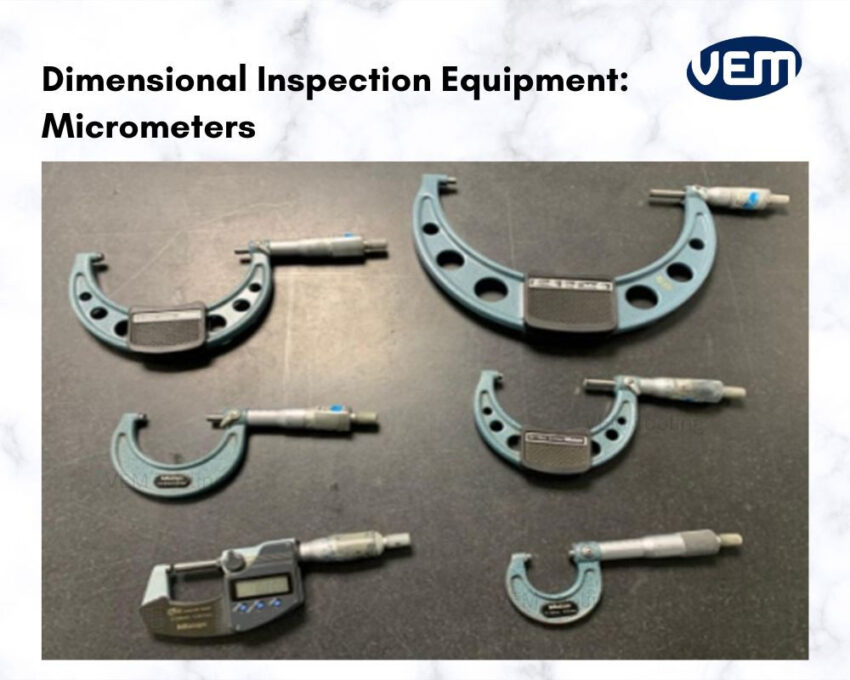
Micrometers are classified into several types, such as outside micrometers, inside micrometers, and depth micrometers.
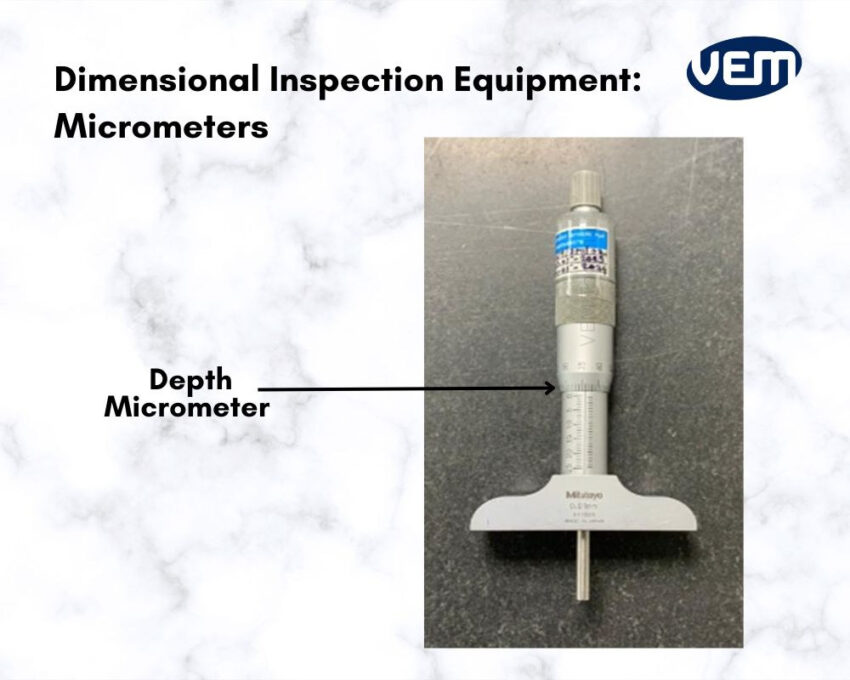

CMM, abbreviated for coordinate measuring machine, is a complex device that incorporates a probe to analyze and measure the geometric shape of physical objects in 3D space. CMM measurement is highly accurate and precise. They are particularly employed for measuring complex geometries and features that are otherwise challenging to inspect manually. There are various types of CMM dimensional inspection equipment:
One of the most common CMM dimensional inspection types is bridge CMMs. They make use of a probing system that moves along three axes: X, Y, and Z.
Bridge CMMs are enabled with multi-sensor measurements, such as probing and scanning. They are ideal for measuring machined parts with high tolerances and are apt for measuring medium to large parts.
Cantilever CMM provides an open access from all three sides, which makes it easier to load and unload components, manually or automatically. Cantilever CMMs are highly accurate and apt for measuring smaller parts. They also provide great flexibility, which makes them ideal for rapid prototyping.
Gantry CMMs are similar to bridge CMMs, but they are much larger, which is why it is recommended for gantry CMMs to be mounted on a solid foundation, i.e., generally directly on the floor.
Gantry CMMs demonstrate the same level of accuracy as the bridge CMMs. They are used for large measurement volumes and are, thus, used for very heavy or large parts.
Portable measuring arm CMMs are employed for field measurements. They can easily accommodate parts that are otherwise not easy to transport. They can take measurements of parts on the shop floor as opposed to in a lab, thus enabling quick analysis.
Portable measuring arm cmm is particularly useful for analyzing parts that are integrated into their fixtures or assemblies. You should, however, note that they are less accurate than other CMMs.
Horizontal arm CMMs involve horizontally mounted probes and are designed to measure long and thin objects. Horizontal arm CMMs are employed when parts cannot be inspected with vertical CMMs. For instance, sheet metal.
It’s apt for measuring parts that require low tolerances and do not require a significant foundation system.
Optical CMMs are portable, non-contact devices and utilize an arm-free system. Optical CMMs are ultra-fast and conducive to industry 4.0 manufacturing. They are portable and lightweight, but they have a slightly lower level of accuracy.
Optical comparators are dimensional inspection tools that are employed to project an enlarged image of a part onto a screen. They enable a detailed inspection of the part against its template.
Optical comparators enable operators to examine the contours and features of the part and are particularly beneficial for inspecting small and complex components. It also enables validating dimensions that are otherwise challenging to measure through other contact methods.
Laser scanners utilize laser beams for dimensional capture. These scanners measure the time that the laser beam takes to reflect off a part’s surface. Laser scanners are high-speed and provide extremely accurate measurements.
3D scanners employ structured light technology. They create an extremely extensive and detailed 3D representation of the parts. Thus, 3D structured light scanners are particularly effective for dimensional inspection of complex geometries that are otherwise challenging with other tools.

Fixed gauges are custom-made dimensional inspection tools. They are designed to check whether the part dimensions fall within the specified tolerance range. They are quick and are used to verify compliance. Following are some examples of fixed gauges in dimensional inspection:

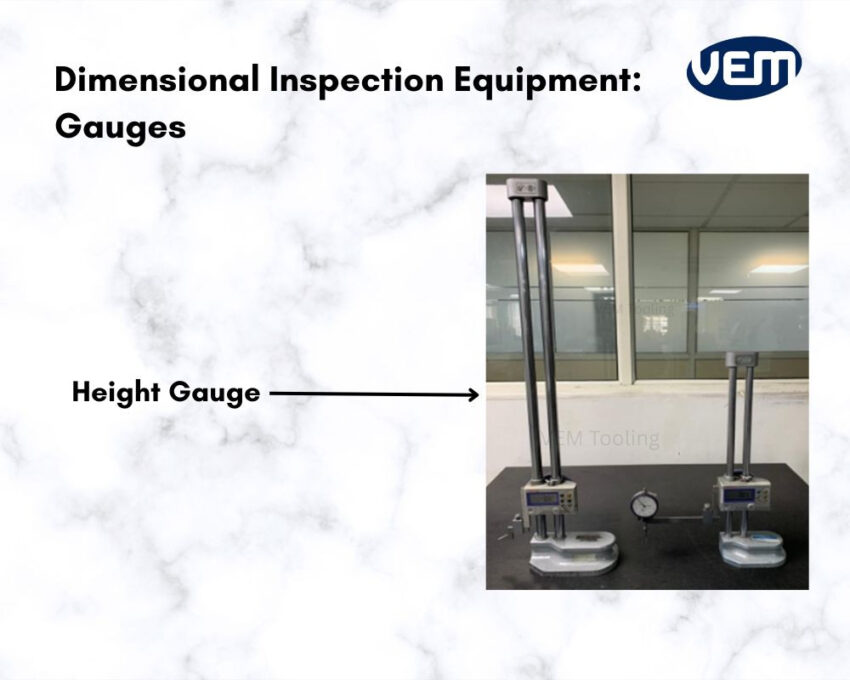
Adjustable gauges can be set to various sizes, which makes them suitable for measuring internal features such as holes and threads. They are highly versatile and flexible, which is why they can meet a range of requirements in maintenance and assembly tasks. Following are some examples of adjustable gauges in dimensional inspection:
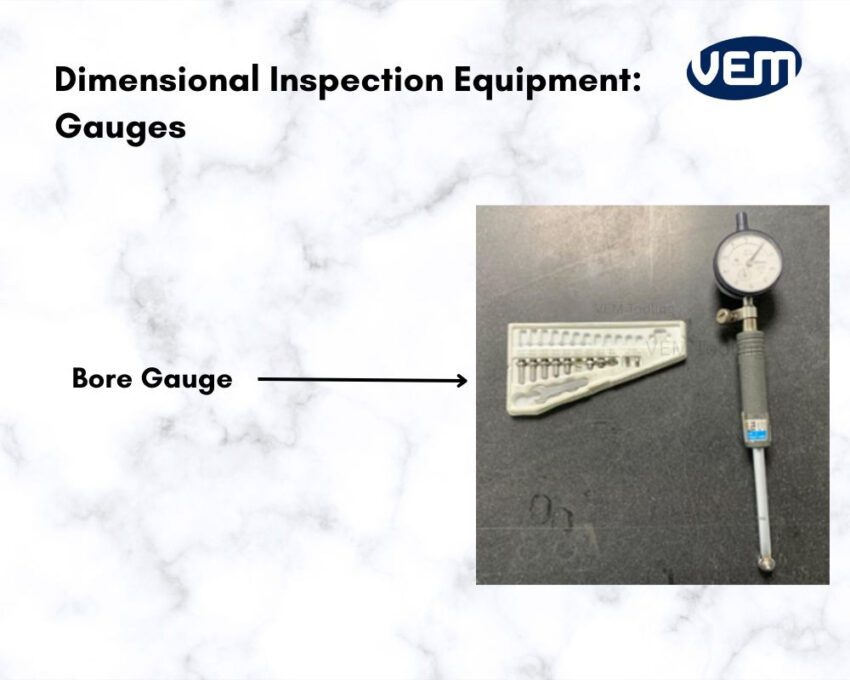
Pneumatic measurement tools leverage the properties of air to measure dimensions accurately. It operates by introducing air through a controlled opening. The measurement tool detects variations in airflow or pressure, and the resulting changes are recorded.
These types of dimensional inspection tools are especially beneficial if minimal contact with the part to avoid damage is a priority. It is also applied when it is not possible to use traditional or common contact measurement tools.
Pneumatic measurement tools enable manufacturers to achieve extremely tight tolerances that are as precise as 0.005 inches / 0.127 mm or smaller.
Dimensional inspection plays a pivotal role in ensuring that parts meet the expected requirements and specifications. It enables manufacturers to optimize their manufacturing processes and elevate the quality of the parts and products.
VEM Tooling has expertise in manufacturing high-quality parts for over 20 years. Our design experts and experienced engineers can guide you with dimensional inspection requirements and other manufacturing solutions.